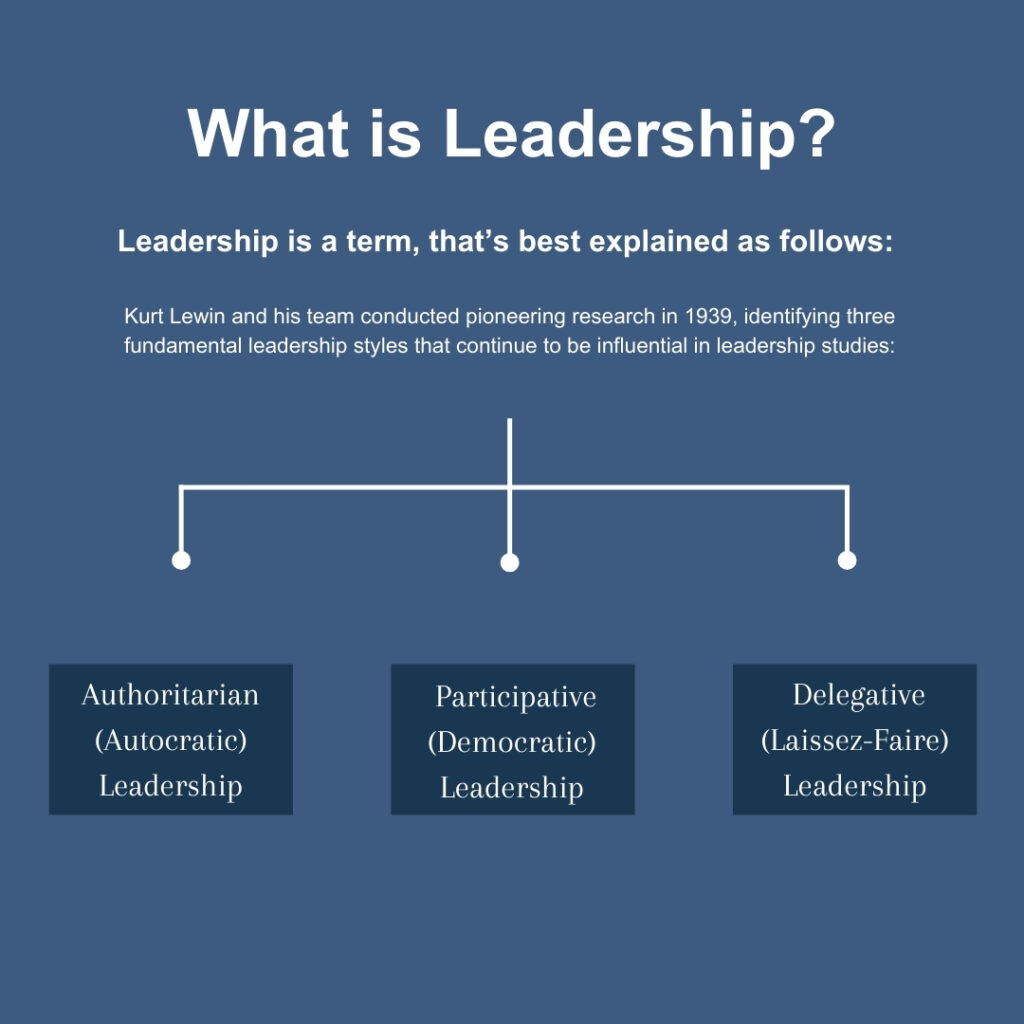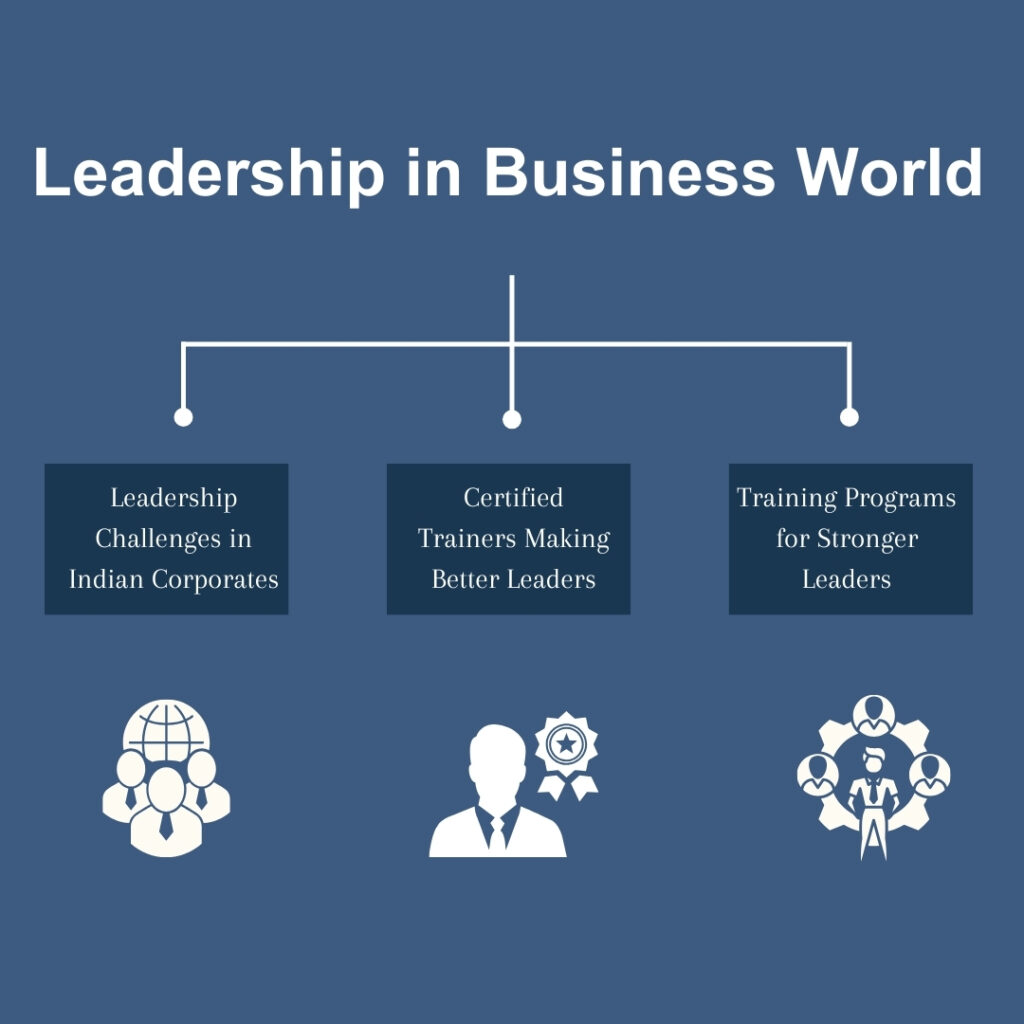Introduction
In today’s fast-changing Indian workplaces, being a good leader is crucial for success. This article, written by K Karthik Raja – a Certified Soft Skills Trainer deeply involved in corporate training, explores why leadership matters in Indian business. I’ll share some facts and real stories to show how certified soft skills training helps in creating exceptional leaders.
What is Leadership?
Leadership is a term, that’s best explained as follows:
Kurt Lewin and his team conducted pioneering research in 1939, identifying three fundamental leadership styles that continue to be influential in leadership studies:
1. Authoritarian (Autocratic) Leadership: In this style, the leader makes decisions independently, with minimal input from the team. The leader dictates tasks, sets expectations, and expects prompt compliance. It is efficient but can stifle creativity and team engagement.

2. Participative (Democratic) Leadership: This style involves collaborative decision- making, where the leader seeks input and ideas from the team. It fosters a sense of ownership among team members and often leads to more well-rounded and innovative solutions.
3. Delegative (Laissez-Faire) Leadership: Laissez-faire leaders delegate decision-making authority to team members, allowing them significant freedom in how they approach tasks. While it encourages autonomy, it may lead to a lack of direction and accountability if not managed effectively.
Lewin’s framework laid the groundwork for understanding different leadership approaches, providing a foundation for subsequent research and discussions on effective leadership styles.
Leadership in Business World:
1. Leadership Challenges in Indian Corporates: India’s businesses are growing, but they face a big problem – many of them lack good leaders. A recent study found that 67% of Indian companies struggle with leadership issues such as Lack of Consistency, Liveliness, Initiative, Moral Courage and Planning & Organization. This means they find it hard to lead their teams in a competitive market. It’s a big problem that needs solving.
2. Certified Trainers Making Better Leaders: Certified Soft Skills Trainers are like coaches for leadership. They understand the challenges Indian professionals face. When companies use certified trainers, they see a 30% improvement in leadership skills in just one year. That’s a big boost!
Real Story:
Take Shalini, a rising star in finance. With a certified trainer’s help, she learned how to be a better leader. The trainer taught her how to understand people’s feelings, making her not only better at her job but also improving how her team worked together.
3. Training Programs for Stronger Leaders: Special training programs for leadership help Indian businesses a lot. These programs teach important skills like how to think strategically and make good decisions. A report from the National Institute of Leadership and Management found that businesses using these programs see a 20% increase in how much work their employees get done.

Training Models for Leadership Development:
When it comes to Leadership Development, there are 3 types of Leadership Training Models, they are listed below:
1. Situational Leadership: Situational leadership is a model that underscores the importance of adapting leadership styles based on the specific circumstances or needs of a given situation. Developed by Paul Hersey and Ken Blanchard, this model proposes that there is no one-size-fits-all approach to leadership. Leaders must assess the readiness or maturity of their team members and adjust their leadership style accordingly. For instance, in situations where team members are highly skilled and motivated, a leader may adopt a delegative style, allowing more autonomy. In contrast, when dealing with a less experienced or less motivated team, a more directive approach may be necessary.
2. Transformational Leadership: Transformational leadership is a model that focuses on inspiring and motivating followers to achieve exceptional results and develop their full potential. Leaders employing this model are charismatic and visionary, capable of articulating a compelling vision for the future. Transformational leaders instill a sense of purpose and enthusiasm in their teams, encouraging them to surpass their own expectations. They often foster a positive organizational culture and are skilled communicators. This leadership style is associated with increased employee engagement, innovation, and overall organizational performance.
3. Coaching Leadership: Coaching leadership revolves around personalized development and mentorship. In this model, leaders act as coaches, guiding and supporting individual team members to enhance their skills and reach their full potential. The emphasis is on one-on-one interactions, feedback, and continuous learning. Leaders employing the coaching leadership style invest time in understanding the unique strengths and weaknesses of each team member, providing constructive feedback and tailored developmental opportunities. This model contributes to a culture of ongoing improvement, skill refinement, and long-term career growth for individuals within the organization.
Each of these leadership models has its strengths and is suitable for different situations and organizational contexts. Effective leaders often employ a combination of these models, adapting their approach based on the needs of their team and the challenges they face.
Conclusion
In Indian companies today, being a good leader is more than just a job skill – it’s a way to make the whole business better. Certified Soft Skills Trainers and special training programs are like guides on this journey. The author, a supporter of good leadership, has seen people go from good workers to inspiring leaders through these programs. By investing in leadership development, Indian businesses not only solve problems but also create a new generation of leaders ready to take them to new heights.





Leave a Reply